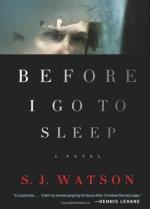|
This section contains 2,560 words (approx. 9 pages at 300 words per page) |

|
SLEEP, as a periodic, recurrent state of inactivity and altered consciousness, marks a boundary line in human experience. However sleep is culturally evaluated and understood, it is a state quite different from ordinary, waking life. As such, it has been a universal object of religious interest and imagination. The various traditions, symbolisms and rituals of sleep are closely related to religious understanding of night and the role of dreams, to assessments of death, and to themes associated with its apparent opposites: dawn and awakening.
Mythologies of Sleep
Figures and notions associated with sleep appear in numerous mythologies and folk traditions.
Personifications of Sleep
While personified figures of sleep appear in mythology, poetry, and artistic representations, they are rarely themselves the focus of cultic activity. The personifications often reveal the ambiguous assessment of sleep: it is peaceful and restorative, and it is like death. For example, while the early...
|
This section contains 2,560 words (approx. 9 pages at 300 words per page) |

|


